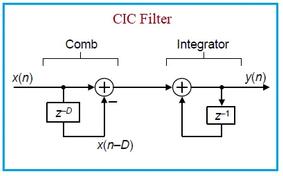Companding vs. Expanding: Signal Processing Techniques Explained
Advertisement
This article explains the difference between companding and expanding, two techniques used in signal processing, particularly in audio and telecommunications. We’ll cover why they’re used and how they work together to improve signal quality.
The key differences between the terms will be explained in detail.
The Problem: Quantization Error and Noise
Consider an analog voltage range of 1000V to 1V. In many scenarios, lower-level signals are more common. Think of a normal conversation where most speech occurs at a relatively low volume.
When most signals are at a low level, the quantization error becomes a significant problem. This error, introduced during Analog-to-Digital Conversion (ADC), becomes proportionally larger for smaller signals, leading to distorted or garbled sound.
Furthermore, low-level signals are inherently more susceptible to noise. This makes it even harder to accurately transmit and receive these signals.
The Solution: Companding
The most common way to combat the issue of quantization error and noise is called companding. The word “companding” is a portmanteau of “compressing” and “expanding,” as it involves both processes.
Companding offers several advantages:
- Minimizes quantization error: By emphasizing low-level signals before quantization, the quantization error is reduced proportionally.
- Minimizes effects of noise: Boosting the signal strength before transmission makes it less vulnerable to noise interference.
- Reduces dynamic range: This allows for fewer bits to be used during digitization, optimizing bandwidth.
- Improves signal quality before transmission: Overall, companding ensures a cleaner signal for transmission.
Compression
At the transmitting end, the signal (e.g., voice) undergoes compression. This means the dynamic range is reduced:
- Low-level signals are emphasized (their amplitude is increased).
- High-level signals are de-emphasized (their amplitude is decreased).
Here’s a visual representation of a compression amplifier:
 Figure 1: Compression Amplifier
Figure 1: Compression Amplifier
As shown, an Analog to Digital converter (ADC) is used in PCM modulation. During A to D conversion analog signal gets distorted; this results in quantization error.
Expansion
At the receiving end, the recovered signal is passed through an expander circuit. This circuit does the opposite of the compressor:
- Low-level signals are de-emphasized.
- High-level signals are emphasized.
The expander essentially reverses the compression, restoring the original dynamic range of the signal.
Here’s a visual representation of an expansion amplifier:
 Figure 2: Expansion Amplifier
Figure 2: Expansion Amplifier
At the receiving end, digital signals are translated into analog signals. An analog signal is passed through expander amplifier. It performs the opposite function of compression amplifier.
How Companding Works: A Visual Representation
The following curve illustrates how the output voltage varies with the input voltage during expansion:
 Figure 3: Companding vs. Expanding Curve
Figure 3: Companding vs. Expanding Curve
As shown, low-level signals are amplified less compared to high-level signals. If the compression and expansion curves are perfectly equal and opposite, the result is a highly accurate reproduction of the original transmitted signal.
A-Law and μ-Law Companding
In telephone systems worldwide, two primary types of companding are used: A-law and μ-law. Each has slightly different compression characteristics, optimized for different regions and applications.
Advertisement
 RF
RF






